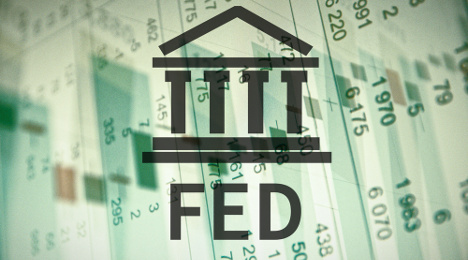How Q1 GDP figure might frame next rate discussion

The Federal Open Market Committee within the Federal Reserve is set to conduct its next regularly scheduled meeting on Tuesday and Wednesday. It appears the policymakers have much to discuss since first-quarter gross domestic product figures arrived this past Friday.
With interest rates on the mind of auto finance providers and others in the industry, the GDP figures prompted a pair of experts from First Franklin Financial Services to state, “The fact the Fed can no longer hold off on rate hikes really raises the stakes for the overall economy because we now have zero room for negative downturns. We really need these consumers to step up and start spending their higher wages and we really need some of this soft data to come to fruition.”
According to a recap from Comerica Bank, the first estimate of Q1 real GDP came in “about as expected” with a 0.7 percent annualized growth rate. Chief economist Robert Dye indicated several factors were in play. He noted that personal consumption expenditures — what he called the lion’s share of GDP — increased at a 0.3 percent annualized rate.
“A soft Q1 was expected, and that’s what we got,” Dye said in a commentary released by Comerica Bank. “We continue to expect better performance for the current quarter and through the end of this year.
“However, there is a growing question mark over Washington, D.C. We need to see some real progress on the Trump administration’s fiscal agenda in order to justify positive economic expectations for the second half of this year,” Dye continued.
“The failure of meaningful tax reform and infrastructure initiatives could result in a negative and consequential reset of business and consumer expectations and confidence,” he went on to say.
First Franklin Financial Services chief market strategist Brett Ewing and research director Lance Mitchell echoed a similar position, stating consumers took a “wait and see” attitude in the first quarter. Ewing and Mitchell acknowledged this situation is making forecasts even more difficult to make.
“The story continues to be the struggle between the hard and soft data gathered since election time,” they said. “Inconsistencies between the supposedly more bullish consumer and business communities versus the actual dollars and cents they are spending are plaguing the accuracy of economist reports.
“It makes it impossible to predict whether this economy is peaking or just getting revved up,” they added.
Ewing and Mitchell described the near-term as a potential “inflection point” for the economy. Why?
“Business costs are rising as they fight for labor in an extremely tight labor market. But it remains to be seen if higher wages and compensation will eventually run through the economy and lead to higher spending,” they said.
And as far as what the Fed might do, perhaps policymakers won’t tip their hands this week. But when they gather again on June 13 and 14, it might be a completely different situation.
“We believe this also gives the Fed the green light to continue hiking rates and odds should rise to a near certainty for June. They simply cannot hold off into such strong labor numbers,” Ewing and Mitchell said.
Meanwhile, Dye agreed.
We look for the Fed to keep the fed funds rate steady at their upcoming Federal Open Market Committee meeting,” he said. “The odds of a June 14 interest rate hike are increasing.
“According to the fed funds futures market, the cumulative implied odds of a June 14 fed funds rate hike are now up to about 71 percent, which indicates a strong market expectation,” Dye went on to say.

 View The Latest Edition
View The Latest Edition

